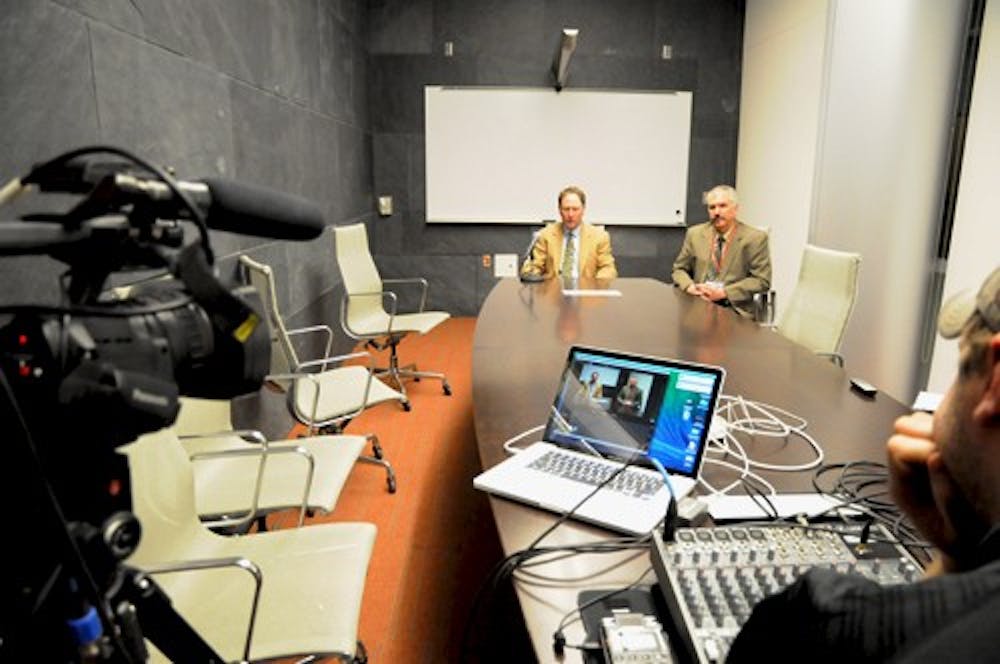CMU research efforts on Great Lakes recognized by EPA
Working to keep the Great Lakes healthy is a top priority of Central Michigan University.
Cameron Davis, senior adviser to the administrator of the Environmental Protection Agency, said the work CMU has done in partnering with government agencies, lawmakers and activists to help preserve and maintain the Great Lakes has been vital. One area he pointed to was CMU researchers locating and working with the Great Lakes wetlands.
"The work that CMU is doing is very important," Davis said in an address to CMU during its Great Lakes Science in Action symposium on Friday. "If we don't know where (the wetlands are), if we don't know where they should be, then how do we bring them back to the right places? The work CMU is doing with (Don Uzarski's) leadership is absolutely critical to that effort."
Davis and others spoke at the symposium to raise awareness of initiatives and issues regarding the health of the Great Lakes, such as fluctuating water levels, pollution and other threats to water quality.
The symposium also acted as a signpost for the love affair between CMU and the Great Lakes restoration community, which has been vital to the movement's success.
University contributions have helped groups studying the lakes move forward on a whole host of processes, Davis said, including mapping out the different wetland areas around the state, and funding research at the CMU biological station on Beaver Island.
In particular, Don Uzarski, director of the CMU Institute for Great Lakes Research, has used these resources to help compose a team responsible for identifying a number of wetland areas around the state.
By identifying the location of the wetlands, Uzarski said, it becomes possible to learn more about its history and possibly begin expanding it.
University President George Ross said through CMU's work on Beaver Island, as well as its collaboration with others like Grand Valley State University, CMU and the EPA have been able to help set new standards in Great Lakes research.
"Biosciences and Great Lakes Research are a top priority," Ross said. "CMU faculty and students, at the undergraduate and graduate levels, are leaders in the restoration and preservation of the world's largest supply of surface fresh water."
Ross also stressed the importance of the construction of the estimated $95 million Biosciences Building as a part of his commitment to research. The Biosciences Building, Ross said, will serve as a precious tool for biology students and others who might help and work with the Great Lakes.
Beyond awareness and providing a haven for young biologists to explore the Great Lakes, the institute also oversees and allocates a $10 million EPA, Great Lakes preservation and restoration grant. The grant was allocated to nine other universities and three government agencies.
A portion of this money has been expended focusing on new technologies, which help make the jobs of these researchers easier and more effective, including CMU's $140,000 unmanned helicopter used for hyperspectral wetlands imaging.
"(Having the grant is) recognition that CMU and GVSU are really players in Great Lakes research," Uzarski said. "We're still growing. The university has been extremely supportive and we're producing. As we keep producing, we're generating more information and doing great things for the Great Lakes"




